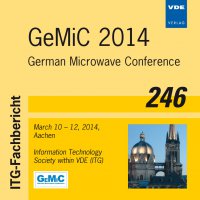KIT Contribution to the Gyrotron Development for Nuclear Fusion Experiments in Europe
Konferenz: GeMiC 2014 - German Microwave Conference
10.03.2014 - 12.03.2014 in Aachen, Germany
Tagungsband: GeMiC 2014
Seiten: 4Sprache: EnglischTyp: PDF
Persönliche VDE-Mitglieder erhalten auf diesen Artikel 10% Rabatt
Autoren:
Jelonnek, J.; Avramidis, K.; Franck, J.; Dammertz, G.; Gantenbein, G.; Hesch, K.; Illy, S.; Jin, J.; Malygin, A.; Pagonakis, I. Gr.; Piosczyk, B.; Rzesnicki, T.; Samartsev, A.; Schlaich, A.; Thumm, M.; Zhang, J. (Karlsruhe Institute of Technology (KIT), Germany)
Inhalt:
As an important contribution to the technology development of future nuclear fusion devices in Europe, KIT is developing MW-level gyrotrons for electron cyclotron heating and current drive. The two most important fusion experiments under development are the stellarator Wendelstein W7-X at Greifswald, Germany and the tokamak ITER at Cadarache, France. While the series production of the 1 MW, CW, 140 GHz gyrotrons for the 10 MW ECRH system of the stellarator W7-X will be finalized by 2014, KIT is presently driving the EU-1 MW, CW, 170 GHz gyrotron development for ITER. The development runs within the European GYrotron Consortium (EGYC) and in close cooperation with the industrial partner Thales Electron Devices (TED), France. In parallel, KIT is pushing forward the development of the advanced multi-MW coaxial-cavity gyrotron technology. Using this technology, KIT has achieved an RF output power of 2.3 MW in short pulses at an operating frequency of 170 GHz. Future fusion devices (DEMO) will most probably require operation frequencies above 200 GHz for efficient current drive and frequency step-tunable RF sources for plasma stabilization. KIT has successfully demonstrated operation of a 111.6 GHz – 165.7 GHz (D-band), 1 MW short-pulse gyrotron using a diamond CVD Brewster-angle window. First results for the design strategy towards a possible 240 GHz gyrotron for future fusion devices have been achieved. The presentation summarizes current developments at KIT and provides an outlook in future developments.


